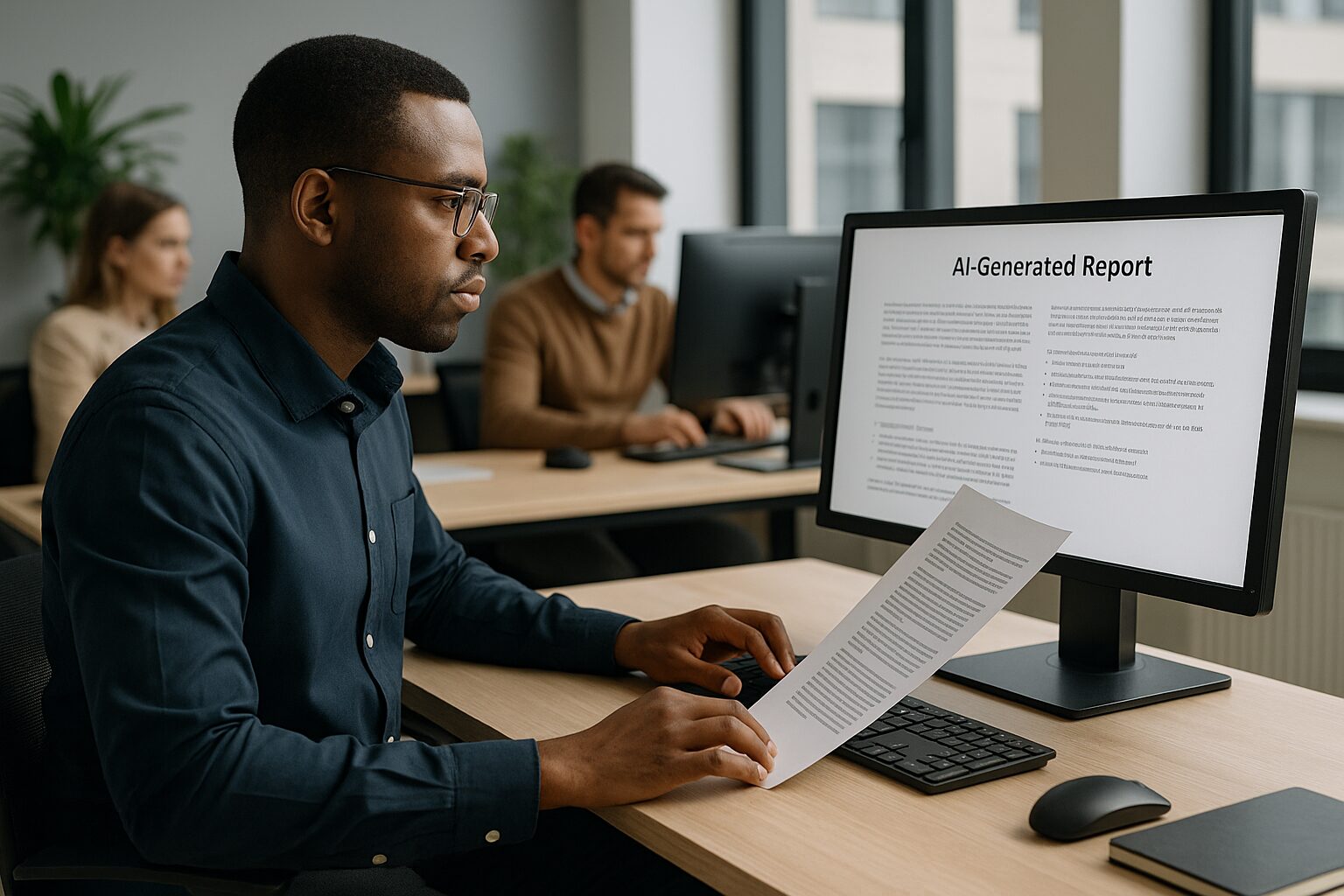We have heard it for the past four years; AI is coming for your job. Companies rushed to adopt AI in the workplace, thinking automation would handle everything and cut costs. Now that has changed, even some of the loudest voices in tech are walking that back. At a recent forum, executives finally said out loud what many of us knew from the start: AI needs human oversight.
You can’t run a company or a courtroom or a newsroom on autopilot; not unless you are comfortable with errors, liability and a workforce that stops thinking for itself.
Human in the Loop AI: Not Just a Catchphrase
Let’s be clear, AI is good at pattern matching, repetitive tasks and handling loads of data. What it’s not good at is judgment. That gray area where nuance, ethics, exceptions to the rule and experience live. That’s where humans come in.
When tech leaders say you need “humans in the loop,” here’s what that actually means:
- You need someone to review AI-generated work, not just accept it at face value.
- You need people who understand context, something AI still can’t grasp.
- You need teams trained to spot when something is off, incomplete, or just plain wrong.
Without that, you get what we have already seen:
- Lawyers submitting fake court cases from AI tools.
- Deloitte Australia agreed to partially refund $290,000 for a flawed AI report with fabricated academic references and quotes.
These AI workplace blunders prove the issue is not just the tech. It’s the people who treat it like it knows all, instead of what it is; a tool that still requires human in the loop AI oversight.
Poor AI Use Is a Workplace Habit Now
AI’s been around long enough for bad habits to set in. A lot of employees are using AI tools with no guardrails, no training and no clue or in some cases care to verify what they are producing. To be fair, most workplaces have not taught them how to do it right.
Here’s the breakdown:
- People rely on AI without understanding its limits.
- Critical thinking and comprehension skills are eroding.
- AI output gets passed off as “good enough” without review.
It’s not just a worker issue; leadership is often under the illusion that AI will save money and time. Without investing in proper upskilling or creating rules for safe use. But AI doesn’t correct itself. If workers are not trained to check, question and polish AI outputs, then errors don’t just happen; they scale.
Upskilling employees for AI isn’t optional anymore. It’s a necessity.
Judgment and Comprehension Are the Competitive Edge
Here’s what no one wants to say out loud: most companies can’t afford to properly train their staff on how to use AI. Layoffs are happening, budgets are tight. AI workforce readiness is rarely a priority.
Avoiding it doesn’t make the problem go away. You can’t automate good judgment.
If you want your workforce to compete in an AI-heavy world, then you need to double down on what AI can’t do:
- Read between the lines
- Understand emotional tone
- Recognize ethical red flags
- Use lived experience to inform decisions
These are not soft skills; they are survival skills in a workplace flooded with automation. You need to train employees to use AI responsibly, don’t just hand them the tool and hope for the best.
In The End
If your organization is treating AI like a shortcut to eliminate jobs, you are already behind. You don’t need fewer people; you need smarter use of people. AI can draft, summarize and repeat. Only humans can interpret, separate, and decide.
Don’t wait for another AI blunder to show you what’s missing. Start retraining your teams not just to use AI, but to think with it, challenge it and lead alongside it.
____________________________________________________________________________________________________________________________________
Shaunta Garth is a Strategic Communications & Visibility Architect specializing in digital storytelling, media strategy and public affairs.
